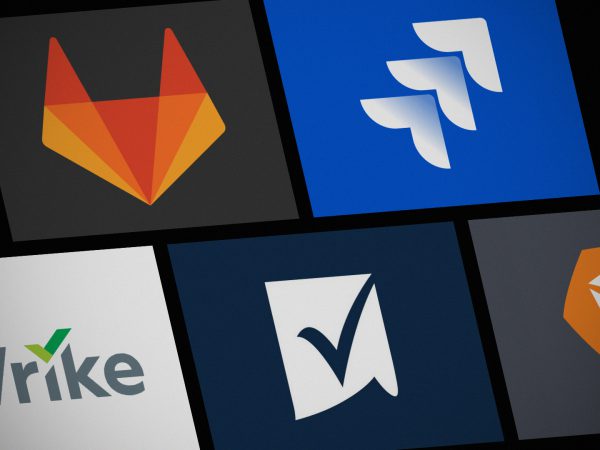
Just recently, remote communication through video conferencing software has become increasingly relevant. In particular, due to the global quarantine situation, which has been prolonged for an indefinite period. Indeed, right now, it is utterly important to have an efficient way to keep in touch with loved ones, friends, employees, and clients remotely. Let’s take a look at some of the top solutions in this niche.
Top-5 Video Conferencing Solutions for Companies and Individuals
These are the most convenient, efficient, and user stress-free apps for video calls in the opinion of Gravum’s in-house experts.
Skype
Skype still must be the most popular software for video conferences. It is compatible with all popular platforms and is suitable for installation on PC (Mac, Windows, Linux, there is even a web version), and mobile devices (iOS, Android). The main advantage of this extremely popular tool is the ability to make group calls covering up to 50 participants and lasting up to 4 hours (and up to 100 hours in total per month). You can also use the service to exchange text messages and files (both in private and group chats).
Skype has its unique feature as well – an automatic translator that allows you to communicate with foreign partners in your native language, while they see/hear auto-translated phrases in their own language (for example, in Spanish). So far, Skype can only accept phrases in English, Spanish, Italian, and Chinese, however. For the remaining 50 languages, you can only use the text chat instant translation.
The major downside of Skype is that may lag on devices with quite weak RAM specs.
Read also: 5 Best WebRTC Media Streaming Engines
Zoom
Zoom is one of the most popular services particularly for video conferencing and online meetings. It is compatible with Mac and Windows, and can also be installed on mobile devices based on iOS and Android. Despite the popularity that has suddenly grown due to quarantine, this solution still works stably, managing to provide a firm connection for hundreds of thousands of conferences simultaneously.
The video conference organizer gets an impressive set of assisting tools here. In particular, you can turn the microphone and video stream on and off, request all conference participants to enable video, leave notes, use interactive elements to engage participants, appoint a co-administrator, enable a screen demonstration, use an interactive whiteboard (a very useful option for teachers), etc.
Zoom has its drawbacks, however – many users note an inconvenient interface, as well as a number of security vulnerabilities that make this software for video calling prone to hacker attacks. Thus, sometimes, scammers use fake Zoom domains to spread malware and gain access to other people’s video conferences.
 Facebook Messenger
Facebook Messenger
Yet another highly popular app for video calls great for both personal and business communication. This messenger can be installed both on mobile devices based on iOS and Android and on desktop PCs or laptops based on Mac and Windows.
Messenger allows for group video calls with the participation of up to 50 people. Moreover, if the number of participants in the video conference does not exceed six people, then the video streams of each of them will be visible in the application window. As an option, you can also assign a speaker, which makes sense when conducting lessons, reports, etc. By the way, the application dynamically allocates video streams depending on who is speaking at a particular moment in time.
The general downside of Facebook Messenger is the strict need to have a registered Facebook account if you want to use it in the first place.
Read also how construction mobile apps will change the construction space after COVID-19
WhatsApp Messenger
Next up is software for video conferencing popular mostly among mobile users. To organize a WhatsApp conference, you first need to call one user and add others to the conversation via the button in the upper right corner of the screen. The app is compatible with desktop computers and laptops based on Mac and Windows (there is also a web version) as well as with mobile devices based on iOS, Android.
WhatsApp can also be used for regular texting and file sharing. On the global scale, WhatsApp is mostly preferred for its enhanced security: regular and group calls are fully encrypted in it. Nevertheless, it doesn’t support mass group calls (more than 4 people) as well as the conversation recording (unlike Skype), which gets this solution a slightly lower score.
Google Hangouts
Last but not least among the top apps for video calling is a well-known solution from the Google team – Google Hangouts. This software tool conveniently works in a web browser and you can freely use it on a smartphone or tablet-based on iOS and Android.
Users choose Google Hangouts for its extremely simple interface familiar to Gmail account owners, as well as the ability to use their own email account right away.
The main drawback of this service is the limitation in the number of users to connect to the same conference: a maximum of 10 people for Gmail and G Suite Basic users, and 25 people for G Suite users for business and educational institutions.
Summary
As you can see, there is a pretty sufficient selection of truly high-quality apps for video conferencing tried and tested by years. However, if you want to create something special for your target audience, we are ready to help you out. Gravum specializes in developing web and mobile applications for the most various purposes. Contact us right now to learn more about implementing your particular video conferencing software concept.



